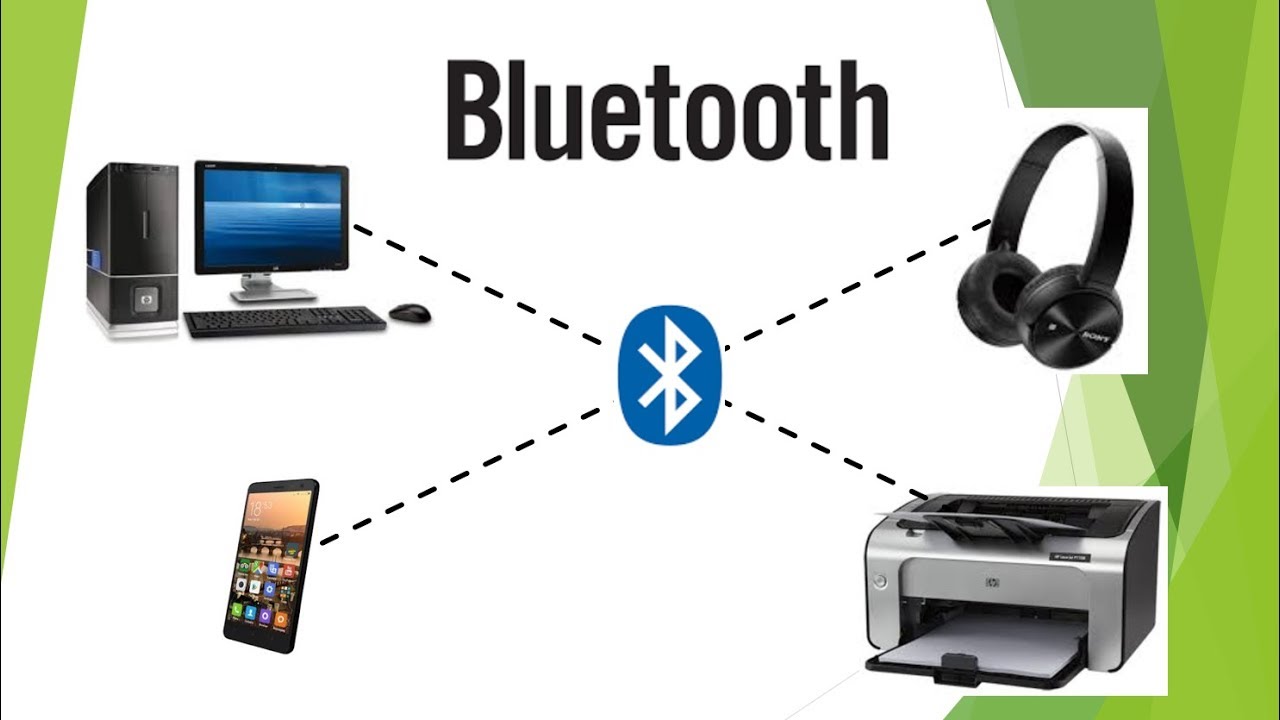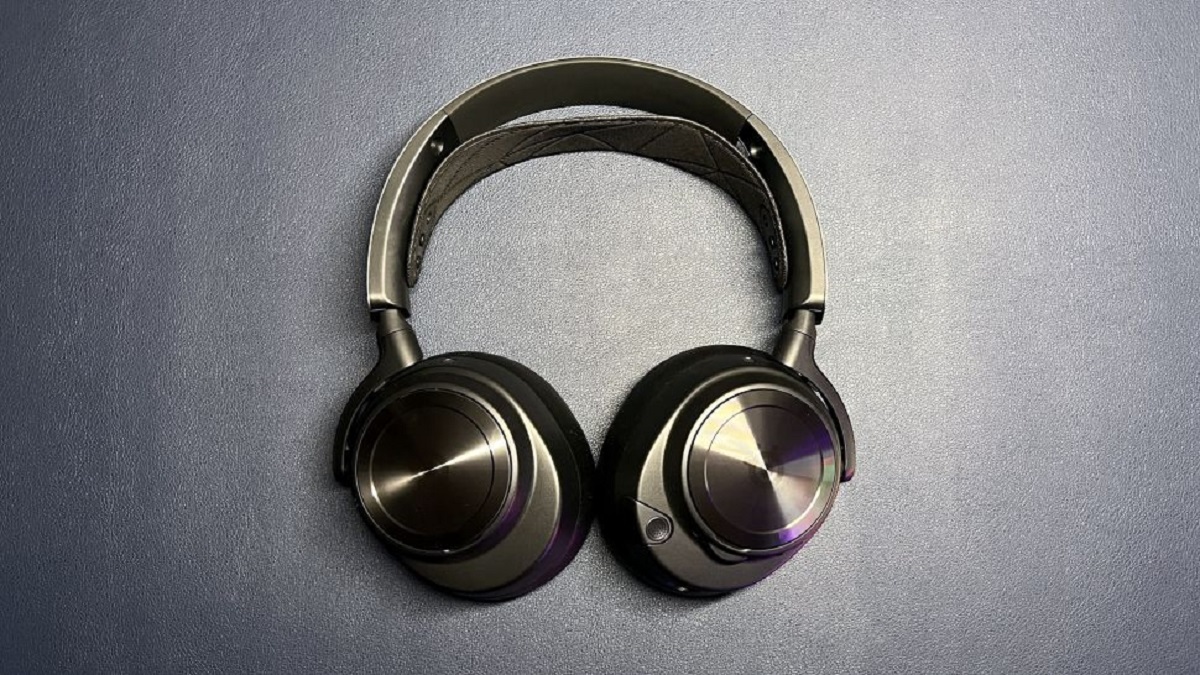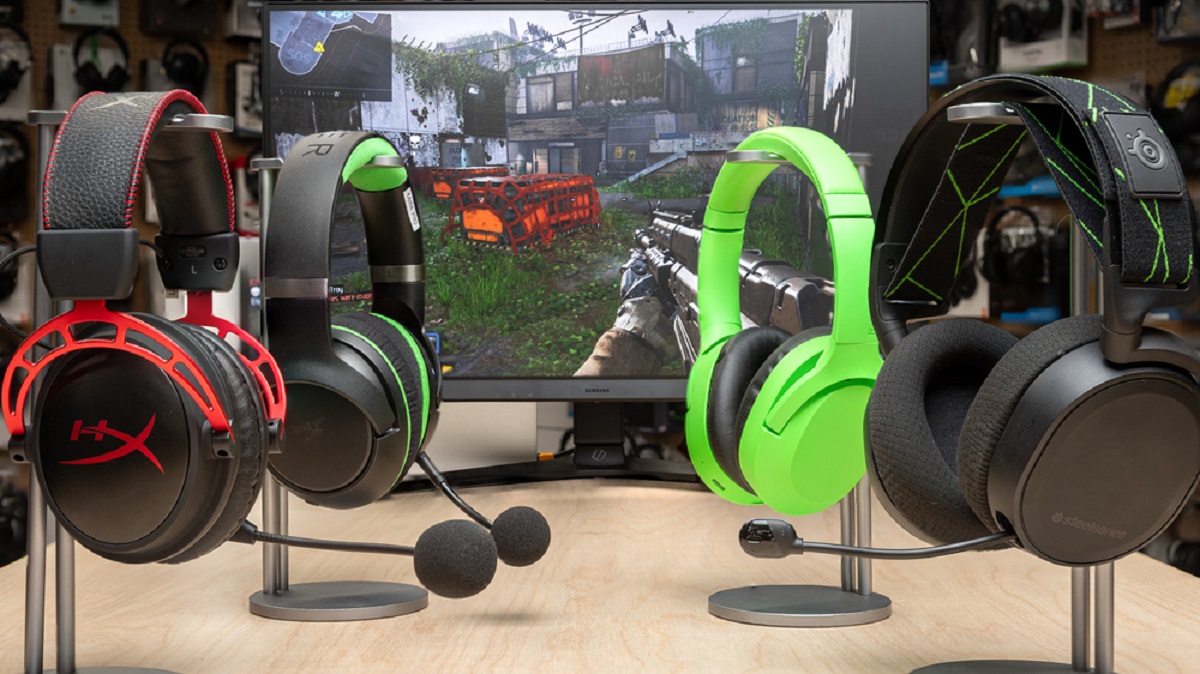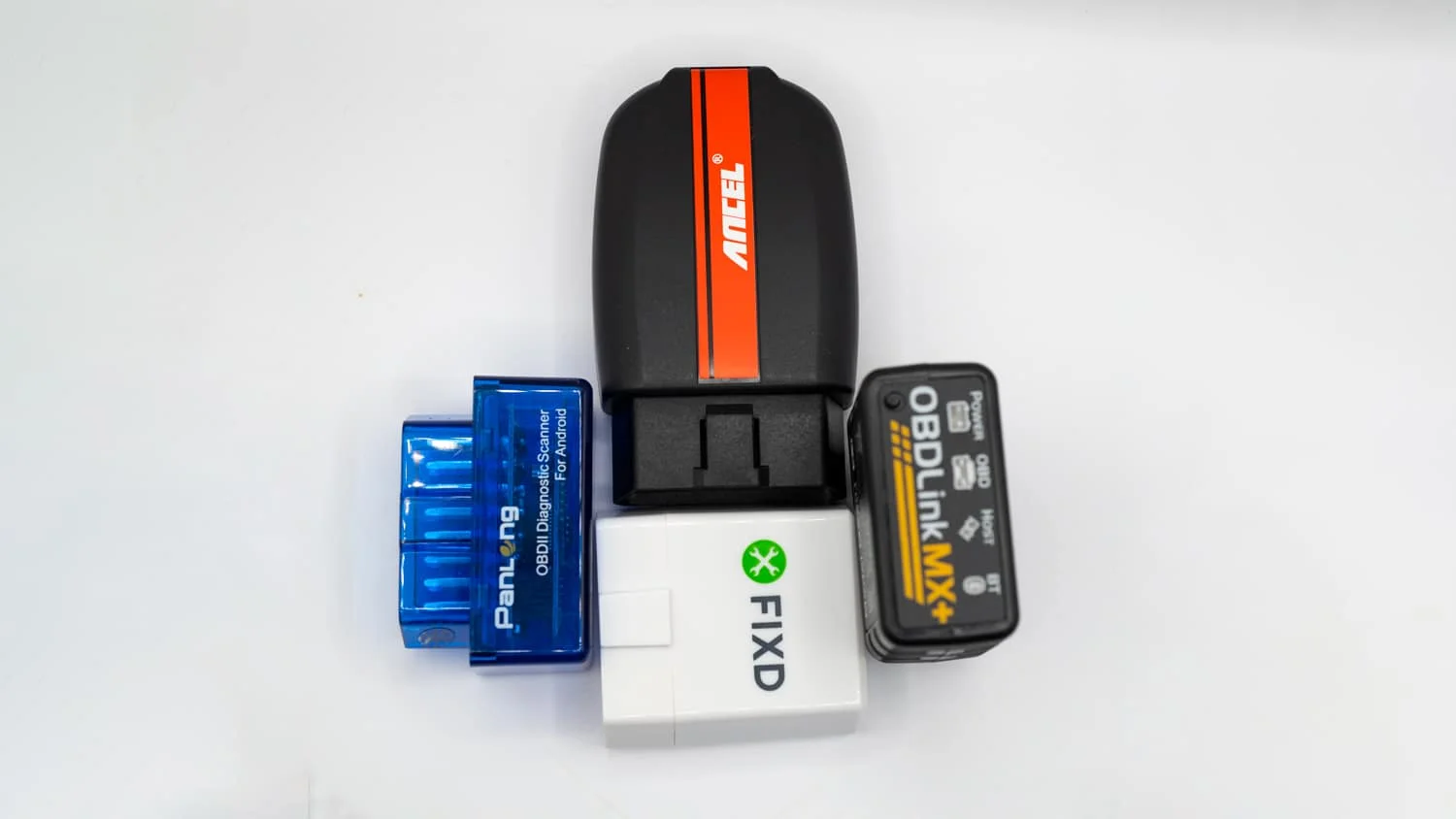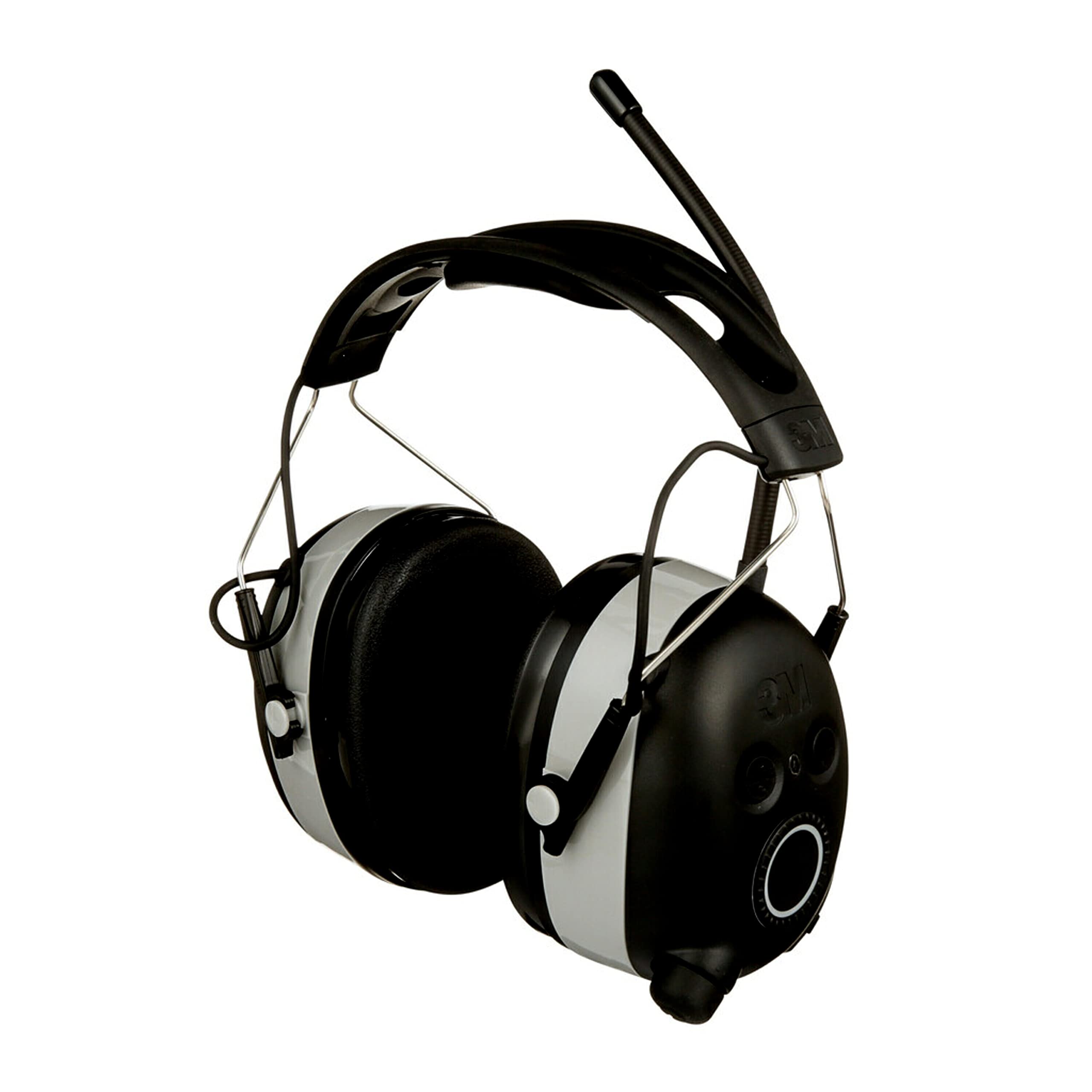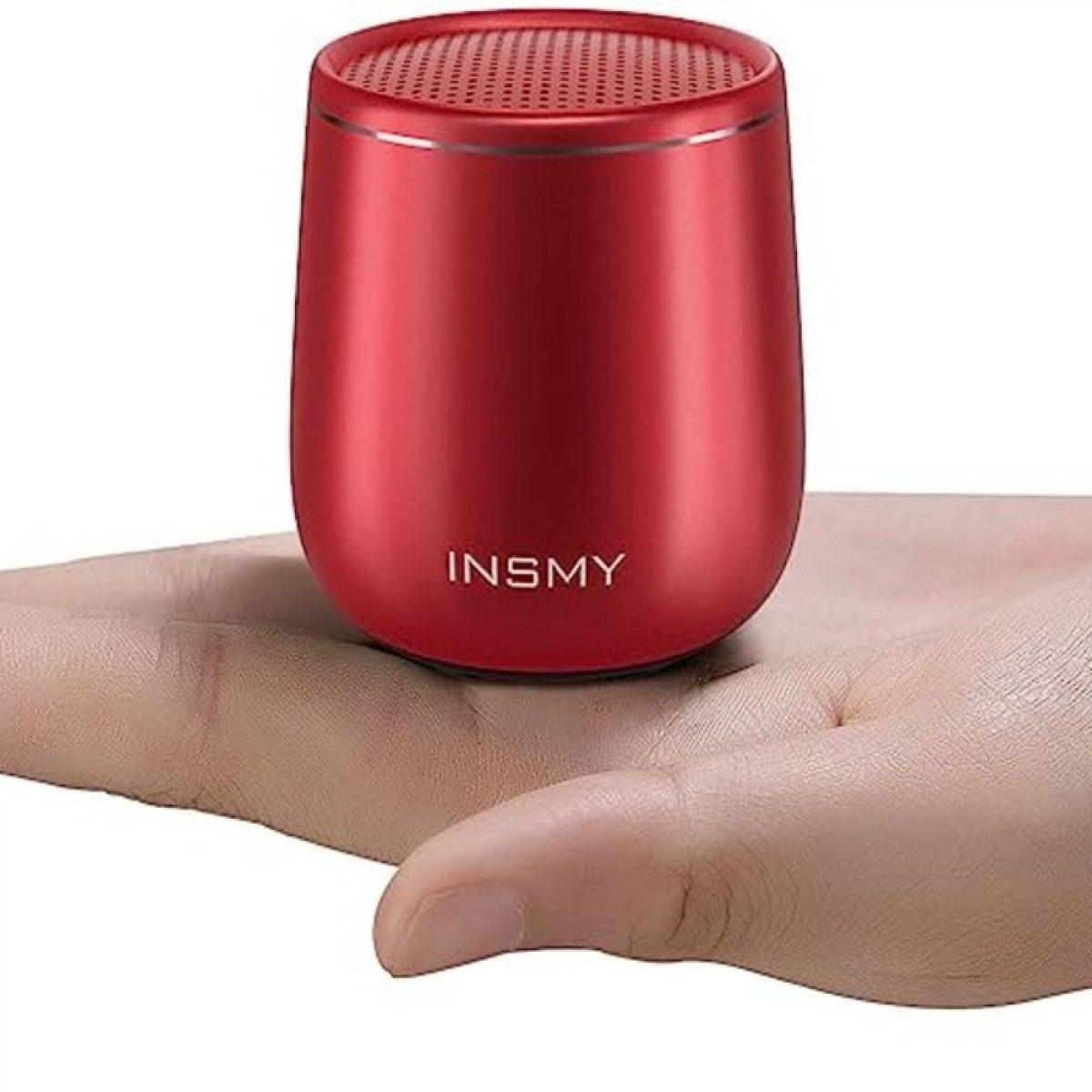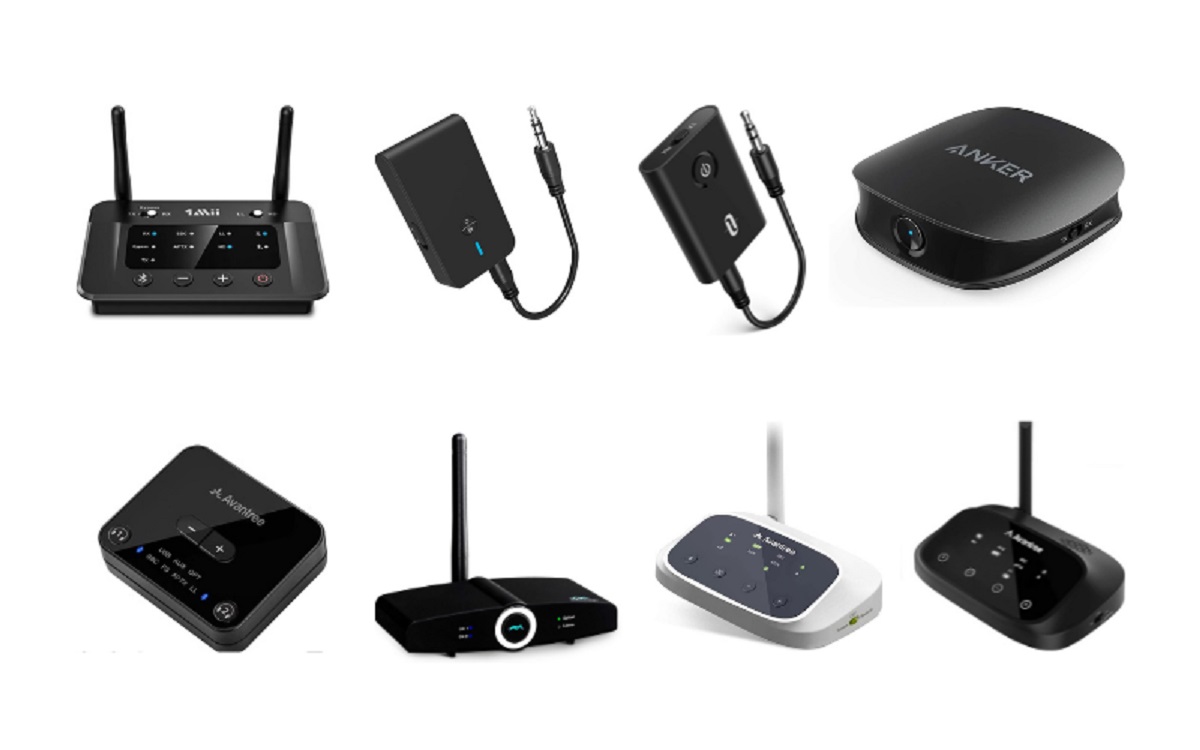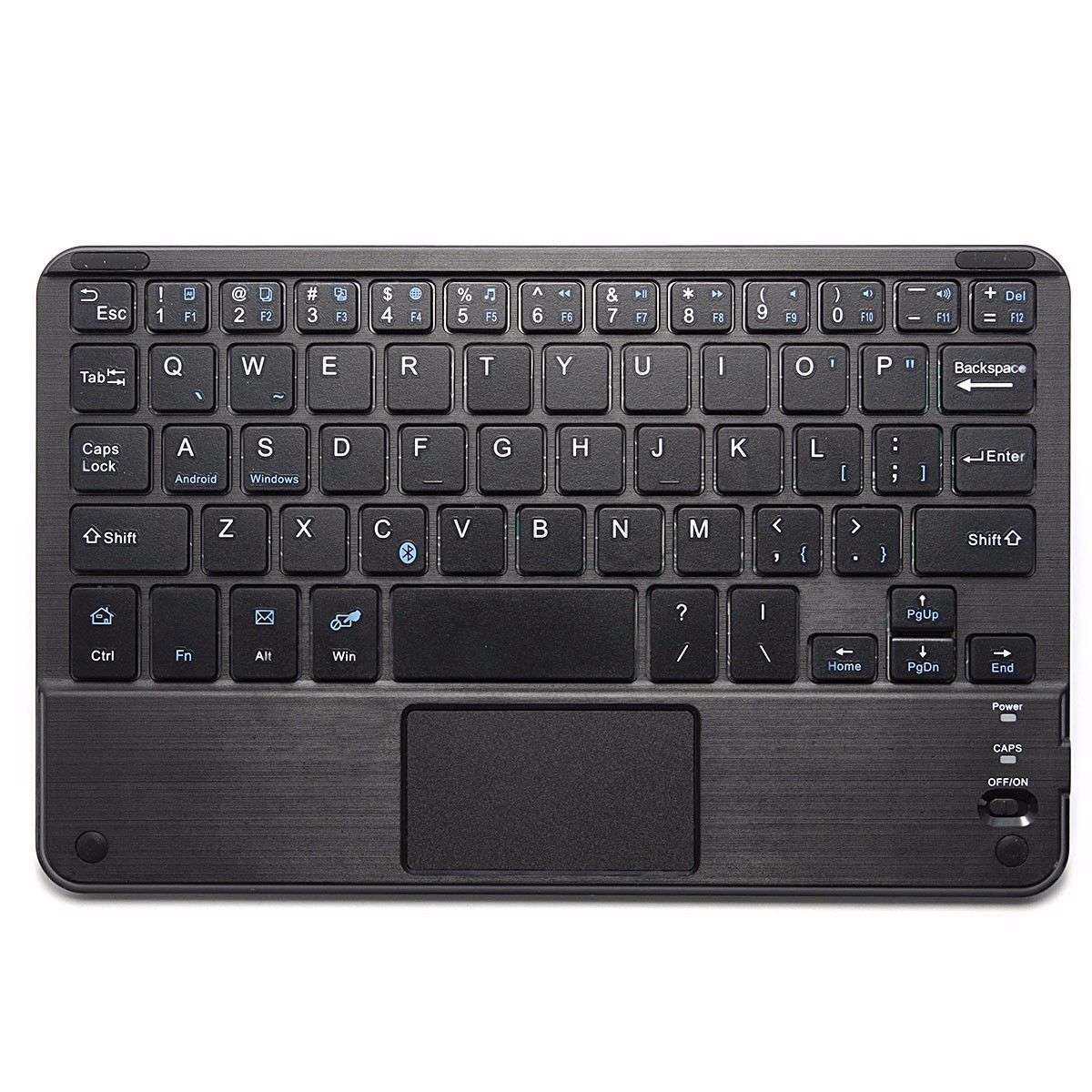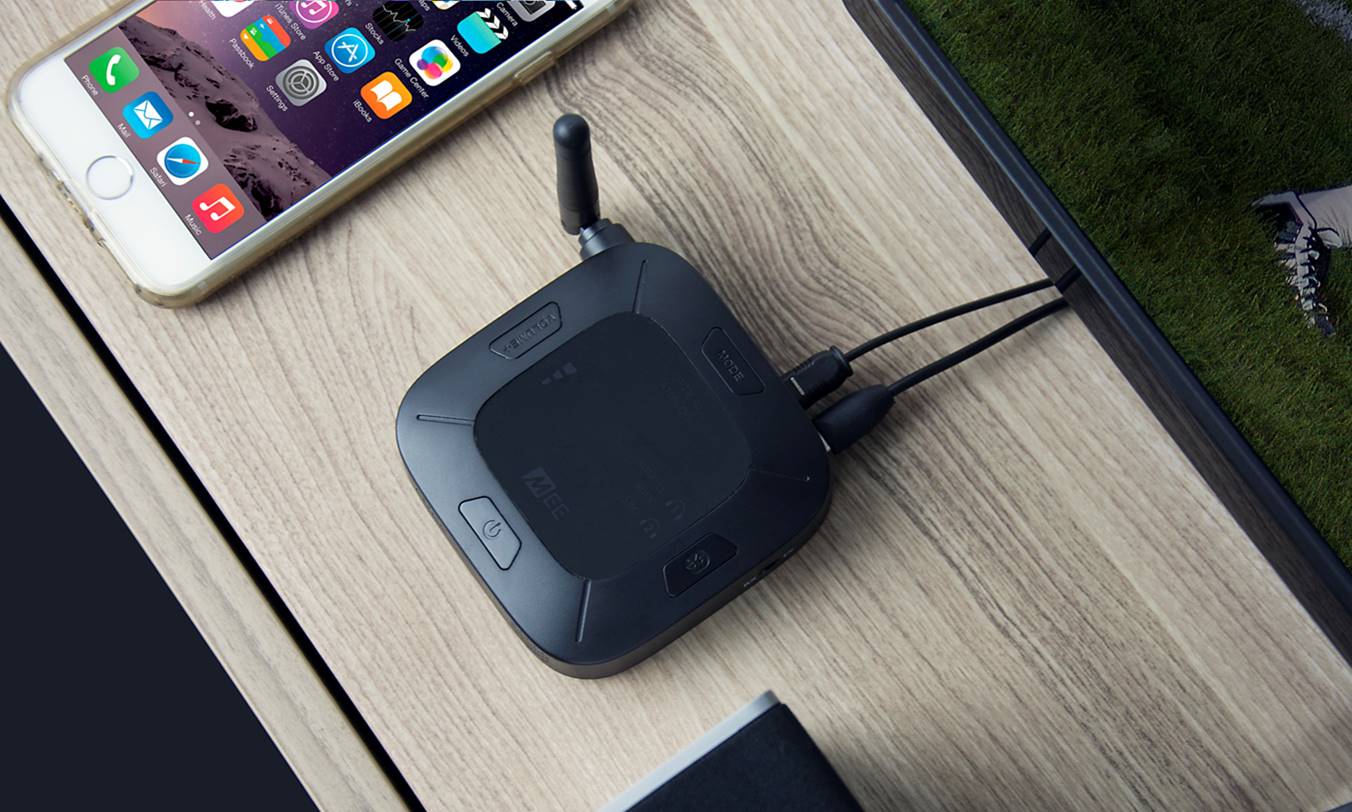Introduction
Welcome to the world of Bluetooth, a technology that has revolutionized the way we connect and communicate wirelessly. In today’s fast-paced, interconnected world, Bluetooth has become an essential part of our daily lives, enabling seamless communication between devices such as smartphones, laptops, headphones, and even household appliances. But what exactly is Bluetooth, and how does it work?
Bluetooth is a wireless communication standard that allows for short-range data exchange between devices. It was first introduced in 1994 by Ericsson, a Swedish telecommunications company, with the aim of replacing cumbersome cables and establishing a convenient and efficient way of connecting devices.
With Bluetooth, you can connect your smartphone to your wireless earphones and enjoy your favorite music or take calls without the hassle of tangled wires. You can transfer files between your laptop and your smartphone without the need for a USB cable. Bluetooth technology has truly untethered our devices, providing us with the freedom to connect and communicate effortlessly.
So, how does Bluetooth actually work? At its core, Bluetooth operates on the principle of short-range radio waves, specifically in the 2.4 GHz frequency range. This frequency range is globally available for unlicensed use, making Bluetooth compatible and accessible to a wide range of devices worldwide.
When two Bluetooth-enabled devices come into close proximity, they form a wireless connection known as a “pairing.” During this pairing process, the devices exchange a series of signals to establish a secure and encrypted communication channel. Once the pairing is successful, the devices can easily transmit data and communicate with each other.
Bluetooth technology operates on a set of specifications, which define the technical details and capabilities of the Bluetooth protocol. These specifications are managed and maintained by the Bluetooth Special Interest Group (SIG), an organization comprised of companies that are key players in the technology industry.
In the next sections, we will delve deeper into the technical aspects of Bluetooth, exploring its specifications, architecture, devices, pairing process, profiles, versions, applications, as well as the advantages and disadvantages of this ubiquitous wireless technology.
What is Bluetooth?
Bluetooth is a wireless communication technology that enables the seamless exchange of data and the connection of devices over short distances. It allows for the transfer of information between devices without the need for cables or wires.
The name “Bluetooth” is derived from the 10th-century Danish king, Harald Bluetooth, who was known for his ability to unite different tribes and promote communication. Just as King Harald Bluetooth brought people together, the Bluetooth technology aims to create a unified standard for wireless communication.
Bluetooth operates using radio waves within the 2.4 GHz frequency range, the same as many other wireless technologies such as Wi-Fi. It provides a secure and reliable connection between devices that are in close proximity to each other, typically within a range of up to 100 meters.
One of the key features of Bluetooth is its ability to support multiple devices simultaneously. This means that you can connect various Bluetooth-compatible devices to a single device, such as a smartphone or a laptop, and seamlessly switch between them. For example, you can connect your Bluetooth headphones, keyboard, and mouse to your laptop, allowing for a clutter-free workspace.
Bluetooth technology has evolved over the years, with each new version introducing improvements in terms of speed, range, and energy efficiency. The latest version, Bluetooth 5.1, offers increased data transfer rates, extended range, and enhanced location accuracy.
Bluetooth technology is found in a wide range of devices, including smartphones, tablets, laptops, speakers, smartwatches, fitness trackers, and even home automation systems. It has become an integral part of our daily lives, enabling us to stream music, make hands-free calls, transfer files, and control smart devices with ease.
Overall, Bluetooth technology has undoubtedly transformed the way we connect and communicate wirelessly. It has revolutionized industries such as entertainment, automation, healthcare, and transportation, and continues to advance and adapt to the needs of the ever-evolving digital world.
How does Bluetooth work?
Bluetooth technology operates on the principle of short-range radio waves to establish a wireless connection between two devices. The process of how Bluetooth works involves several stages, including pairing, authentication, and data transmission.
When two Bluetooth-enabled devices come within range of each other, they begin the pairing process. During pairing, the devices exchange information to establish a secure and encrypted connection. The pairing process typically involves a user-initiated action, such as entering a PIN or confirming a passkey on both devices.
Once the devices are paired, they can communicate with each other using a shared frequency hopping spread spectrum technique. This technique allows Bluetooth devices to hop between different frequencies within the 2.4 GHz range, which helps reduce interference and improve reliability in crowded wireless environments.
Bluetooth uses a master-slave architecture, where one device acts as the master, and the other device(s) act as the slave(s). The master device initiates and controls the Bluetooth connection, while the slave devices respond to the master’s requests.
Once the connection is established, data transmission can occur between the master and slave devices. Bluetooth uses small packets of data to transmit information between devices. These packets contain the necessary information such as the source and destination addresses, data payload, and error-checking codes.
Bluetooth technology supports various features and profiles that enable specific functionalities. For example, the Advanced Audio Distribution Profile (A2DP) allows for high-quality streaming of audio between devices, while the Hands-Free Profile (HFP) enables the use of Bluetooth for hands-free calling in vehicles.
In addition to data transfer, Bluetooth also supports control signals, allowing devices to send commands and instructions to each other. For example, a smartphone can send a command to a Bluetooth speaker to play or pause music.
One of the benefits of Bluetooth technology is its low power consumption. Bluetooth devices are designed to be energy-efficient, which helps prolong the battery life of connected devices. This makes Bluetooth ideal for applications such as wireless headphones, fitness trackers, and IoT devices.
In summary, Bluetooth technology uses radio waves and a series of protocols to establish a wireless connection between devices. The pairing process, authentication, and efficient data transmission enable seamless communication and data exchange between Bluetooth-enabled devices in close proximity.
Bluetooth specifications
The Bluetooth technology operates based on a set of specifications that define the technical details and capabilities of the Bluetooth protocol. These specifications are managed and maintained by the Bluetooth Special Interest Group (SIG), an organization that oversees the development and standardization of Bluetooth technology.
The Bluetooth specifications define the different layers and components of the Bluetooth protocol stack. This stack includes the physical layer, the link layer, the protocol layer, and the application layer. Each layer has its own set of specifications that govern its specific functionality and interactions with other layers.
The physical layer specification defines the radio frequency and modulation techniques used by Bluetooth devices to transmit and receive data. It specifies the frequency range of 2.4 GHz and the use of frequency hopping spread spectrum to minimize interference and improve reliability.
The link layer specification handles the establishment and maintenance of connections between Bluetooth devices. It defines the protocols and procedures for features such as device discovery, pairing, and data transmission. It also includes error correction mechanisms and encryption techniques to ensure secure and reliable communication.
The protocol layer specification encompasses higher-level protocols and profiles that enable specific functionalities of Bluetooth devices. This includes profiles like A2DP for audio streaming, HSP/HFP for hands-free calling, and HID for human interface devices such as keyboards and mice.
Furthermore, the application layer specification allows developers to design and implement Bluetooth applications using standardized APIs. These APIs provide a consistent and interoperable interface for applications to utilize Bluetooth functionalities, making it easier for developers to create Bluetooth-enabled applications and services.
Over the years, Bluetooth technology has evolved with the release of different versions, each introducing improvements and new features. Some notable Bluetooth versions include Bluetooth 2.0+EDR, Bluetooth 3.0+HS, Bluetooth 4.0, Bluetooth 4.2, Bluetooth 5.0, and the latest release, Bluetooth 5.1.
Each Bluetooth version brings advancements in terms of data transfer rates, range, power efficiency, and security features. For example, Bluetooth 5.0 introduced the Low Energy (LE) feature, which significantly reduced power consumption and enabled the use of Bluetooth in IoT devices that require long battery life.
The Bluetooth specifications are continuously updated and improved by the Bluetooth SIG to keep up with technological advancements and address industry requirements. This ensures that Bluetooth stays relevant and capable of meeting the diverse needs of modern wireless communication.
Bluetooth architecture
The Bluetooth architecture consists of various layers and components that work together to facilitate the seamless communication between Bluetooth-enabled devices. Understanding the architecture helps in understanding how Bluetooth devices interact with each other and exchange data.
At the lowest level, the Bluetooth architecture includes the physical layer, which deals with the transmission and reception of radio frequency signals. It specifies the frequency band, modulation techniques, and transmission power used by Bluetooth devices to communicate with each other.
Above the physical layer is the link layer, responsible for establishing and managing connections between Bluetooth devices. This layer handles device discovery, device authentication, and pairing. It also manages the flow control and error correction to ensure reliable data transmission.
On top of the link layer is the protocol layer, which consists of various protocols and profiles that define different functionalities supported by Bluetooth. Profiles like A2DP, HFP, and HID enable specific applications such as audio streaming, hands-free calling, and human interface devices.
The application layer sits on top of the protocol layer and provides access to the Bluetooth functionality for applications and services. It includes APIs that allow developers to interact with Bluetooth features and implement Bluetooth-enabled applications. These APIs provide a consistent interface for communication with Bluetooth devices.
In a Bluetooth network, there are two types of devices: the master and the slave. The master device initiates and controls the connection, while the slave devices respond to the master’s commands. This master-slave architecture allows for multiple devices to be connected through a process called piconet formation.
A piconet is a network formed by a master device and one or more slave devices. The master can connect to multiple slaves simultaneously, but each slave can only be part of one piconet at a time. The master coordinates the communication within the piconet, assigning time slots to each device for transmitting and receiving data.
Bluetooth also supports a scatternet architecture, where multiple piconets can exist in the same physical area. This allows for more complex Bluetooth networks to be formed, with devices participating in different piconets simultaneously.
Overall, the Bluetooth architecture provides the framework for the smooth operation of Bluetooth devices. It defines the layers and components involved in establishing connections, managing data transmission, and enabling specific functionalities. Understanding this architecture helps in developing and troubleshooting Bluetooth applications and services.
Bluetooth devices
Bluetooth technology has enabled the creation of a wide range of devices that can connect and communicate wirelessly. These devices adhere to the Bluetooth specifications and have built-in Bluetooth modules or chips, allowing them to establish connections with other Bluetooth-enabled devices.
One of the most common types of Bluetooth devices is smartphones. Virtually all smartphones today come equipped with Bluetooth functionality, allowing users to connect to various devices such as headphones, speakers, and car audio systems. Bluetooth technology has transformed the way we listen to music, make hands-free calls, and interact with our smartphones.
Another popular category of Bluetooth devices is audio accessories. Bluetooth headphones, earbuds, and speakers have become incredibly popular due to their wireless convenience and compatibility with mobile devices. They provide freedom of movement without the hassle of cables, allowing users to enjoy music, podcasts, and other audio content without any constraints.
Bluetooth technology has also found its way into the world of wearables. Smartwatches, fitness trackers, and heart rate monitors often utilize Bluetooth to sync data with smartphones or other devices. This enables users to monitor their health and fitness statistics conveniently and track their progress over time.
Home automation has also benefited from Bluetooth connectivity. Bluetooth-enabled smart home devices can be controlled and monitored using smartphones or tablets. From smart bulbs and thermostats to door locks and security systems, Bluetooth provides a convenient and secure way to connect and control these devices in our homes.
Keyboards, mice, and other input devices have also embraced Bluetooth technology. Wireless Bluetooth keyboards and mice offer freedom from cables, allowing users to work or play comfortably without being tethered to their computers.
Automotive industry has also embraced Bluetooth for hands-free calling and audio streaming in cars. Bluetooth-enabled car stereos and infotainment systems enable drivers to make and receive calls using their car’s audio system and stream music wirelessly.
Various medical and healthcare devices take advantage of Bluetooth technology as well. From blood glucose monitors to blood pressure monitors, Bluetooth connectivity allows for easy and convenient transfer of health data to smartphones or other devices for tracking and analysis.
The range of Bluetooth devices continues to expand as the technology evolves. From home entertainment to fitness, from automotive to healthcare, Bluetooth has become an integral part of our everyday lives, enabling seamless wireless connectivity and effortless communication between devices.
Bluetooth pairing
Bluetooth pairing is the process by which two Bluetooth-enabled devices establish a secure and encrypted connection. Pairing is necessary before devices can communicate with each other and exchange data. The pairing process involves several steps to ensure a secure and reliable connection.
To initiate the pairing process, both devices must have their Bluetooth functionality turned on and set to discoverable mode. Discoverable mode allows devices to be visible to other Bluetooth devices in the vicinity, enabling them to establish connections.
Once the devices are discoverable, one device (referred to as the initiator) sends out a “discovery” signal to locate nearby Bluetooth devices. The other device (known as the responder) detects this signal and responds with its own information.
The initiator device then presents a list of available devices for pairing. The user selects the responder device from the list and initiates the connection process.
Next, the pairing process involves exchanging a series of encrypted codes and PIN numbers between the two devices. This ensures that the devices can authenticate each other’s identity and establish a secure connection. The PIN numbers are usually displayed on the devices’ screens or provided in the user manuals.
During the pairing process, the devices also establish a set of encryption keys that are used to encrypt and decrypt the data being transmitted. This encryption adds an extra layer of security, protecting the data from unauthorized access.
Once the devices have successfully paired, they can remember each other’s information for future connections. This means that they can automatically reconnect without re-entering the pairing process, as long as both devices have their Bluetooth functionality turned on and are within range of each other.
It is important to note that Bluetooth pairing only needs to be done once between two devices. Once paired, they can communicate and exchange data easily, saving time and effort in subsequent connections.
Pairing devices with Bluetooth can also extend beyond one-to-one connections. Some devices support multi-point pairing, allowing them to simultaneously connect with multiple devices. This feature is often used in scenarios like connecting a smartphone to both a wireless headset and a car’s hands-free system.
Overall, Bluetooth pairing is a crucial step in establishing a secure and encrypted connection between Bluetooth devices. It ensures that the devices can authenticate each other’s identity, exchange encryption keys, and establish a seamless and reliable communication channel.
Bluetooth profiles
Bluetooth profiles are sets of predefined protocols and functionalities that enable specific uses and applications of Bluetooth technology. These profiles define how different Bluetooth devices should communicate and interact with each other to provide standardized functionality.
Bluetooth profiles ensure interoperability between devices from different manufacturers, allowing them to work seamlessly together. They define the parameters and requirements for various Bluetooth features and services, ensuring that devices can communicate and exchange data effectively.
One of the most well-known Bluetooth profiles is the Hands-Free Profile (HFP), which enables hands-free calling in vehicles. Devices that support HFP, such as car audio systems and Bluetooth headsets, can establish a connection and allow users to make and receive calls without holding the phone directly.
The A2DP (Advanced Audio Distribution Profile) is another widely used Bluetooth profile that allows high-quality audio streaming between devices. This profile is commonly used for wireless headphones, speakers, and car audio systems, enabling users to enjoy their favorite music or other audio content without the need for cables.
The HID (Human Interface Device) profile allows Bluetooth devices to emulate input devices such as keyboards, mice, and game controllers. This profile is used in Bluetooth-enabled keyboards, mice, and gamepads, allowing users to interact with their devices wirelessly.
The AVRCP (Audio/Video Remote Control Profile) enables control of audio and video playback on remote devices. It allows users to play, pause, skip tracks, and adjust volume on Bluetooth speakers and headphones using a connected device such as a smartphone or tablet.
Other profiles include the PBAP (Phone Book Access Profile), which enables access to phonebook contacts on Bluetooth devices, and the PAN (Personal Area Networking) profile, which facilitates Bluetooth connections for sharing internet connectivity and creating ad-hoc networks.
Bluetooth Smart devices, also known as Bluetooth Low Energy (LE) devices, have their own profiles as well. These profiles are designed for low-power, energy-efficient devices such as fitness trackers, smartwatches, and medical devices. The GATT (Generic Attribute Profile) and GATT-based profiles are commonly used for developing Bluetooth Smart applications.
Furthermore, Bluetooth profiles are constantly evolving and new profiles are being introduced to support emerging technologies and use cases. The Bluetooth SIG regularly updates and expands the list of supported profiles to keep up with the ever-changing needs of consumers and industries.
In summary, Bluetooth profiles provide a standardized framework for Bluetooth devices to communicate and interact with each other. These profiles define the protocols and functionalities required for specific use cases, ensuring seamless interoperability and enhanced user experiences across different Bluetooth-enabled devices.
Bluetooth versions
Bluetooth technology has gone through several revisions and updates since its initial release, each introducing improvements in terms of speed, range, energy efficiency, and new features. Let’s explore some key Bluetooth versions that have shaped the evolution of this wireless communication technology.
Bluetooth 1.0 and 1.1 were the first versions introduced in 1999 and 2001, respectively. They provided the foundation for basic wireless communication between devices, but had limited data transfer rates and compatibility issues.
Bluetooth 2.0+EDR (Enhanced Data Rate) was released in 2004, offering significant improvements in terms of data transfer speeds. It introduced the EDR feature, which allowed for faster and more efficient data transmission, making it ideal for applications such as audio streaming.
Bluetooth 3.0+HS (High Speed) was released in 2009, introducing a new feature called High Speed, which leveraged Wi-Fi technology for faster data transfer rates. With Bluetooth 3.0+HS, devices could achieve data transfer speeds comparable to that of traditional Wi-Fi networks.
Bluetooth 4.0, released in 2010, focused on low power consumption and introduced the Bluetooth Low Energy (LE) feature. Bluetooth 4.0 enabled the development of energy-efficient devices like fitness trackers, smartwatches, and other Internet of Things (IoT) devices that require long battery life.
Bluetooth 4.2, introduced in 2014, brought enhancements in terms of data transfer speeds, security, and privacy. It introduced features like IP connectivity, which allowed devices to connect directly to the internet via IPv6, opening up new possibilities for IoT applications.
Bluetooth 5.0, released in 2016, brought significant improvements in terms of range, speed, and capacity. It introduced the ability for devices to transmit data over longer distances, reaching up to 400 meters in ideal conditions. Bluetooth 5.0 also doubled the data transfer speeds, enabling faster file transfers and improved audio streaming capabilities.
The latest release, Bluetooth 5.1, introduced in 2019, focused on enhancing location-based services. It included a new feature called Angle of Arrival (AoA) that improved the accuracy of indoor positioning systems, allowing for more precise location detection.
Each new version of Bluetooth builds upon the previous ones, introducing new features, improving performance, and expanding the capabilities of Bluetooth-enabled devices. These advancements have made Bluetooth an integral part of our daily lives, enabling seamless connectivity and communication between devices.
As Bluetooth technology continues to evolve, we can expect further enhancements in areas such as data transfer efficiency, range, security, and compatibility. Bluetooth will continue to adapt to technological advancements and consumer needs, ensuring that it remains a prominent wireless communication technology for years to come.
Bluetooth applications
Bluetooth technology has a wide range of applications and is used in various industries and daily life scenarios. Its versatility, convenience, and reliability have made it an integral part of our interconnected world. Let’s explore some of the key applications of Bluetooth technology.
One of the most common applications of Bluetooth is in wireless audio streaming. Bluetooth-enabled headphones, speakers, and car audio systems allow users to enjoy their favorite music and media without the hassle of cables. The ability to stream audio wirelessly has transformed the way we listen to music, watch movies, and make hands-free calls.
Hands-free calling in vehicles is another popular application of Bluetooth. Bluetooth-enabled car infotainment systems and accessories allow drivers to make and receive calls without taking their hands off the steering wheel. This ensures safer and more convenient communication on the road.
Home automation is another area where Bluetooth has found extensive use. Smart home devices such as light bulbs, thermostats, door locks, and security systems often utilize Bluetooth connectivity. Users can control their smart devices using smartphones or voice assistants, creating a more comfortable and connected living environment.
Bluetooth technology has also made fitness tracking and health monitoring more convenient. Smartwatches, fitness trackers, and medical devices use Bluetooth to connect with smartphones or computers, allowing users to monitor their physical activity, track their health data, and stay proactive about their well-being.
Wireless input devices, such as Bluetooth keyboards and mice, offer greater flexibility and freedom of movement for desktop and laptop users. Users can work or play without being tethered to their computers, resulting in a neater workspace and increased convenience.
Bluetooth has also found its way into the automotive industry, with many car manufacturers embracing Bluetooth technology for in-car connectivity. In addition to hands-free calling, Bluetooth allows for wireless music streaming, access to contact lists, and integration with navigation systems, enhancing the overall driving experience.
The Internet of Things (IoT) is another area where Bluetooth is making a significant impact. Bluetooth LE (Low Energy) enables energy-efficient connectivity for a wide range of IoT devices, including sensors, beacons, and wearable technology. Bluetooth’s low power consumption and compatibility with smartphones make it an ideal choice for IoT applications.
In the healthcare industry, Bluetooth is used for medical devices such as blood pressure monitors, glucose meters, and heart rate monitors. Bluetooth connectivity allows for easy and secure transfer of health data to smartphones or computers, facilitating remote monitoring and enabling better healthcare management.
Overall, Bluetooth technology has permeated numerous aspects of our daily lives, enabling us to easily and wirelessly communicate and connect with various devices. Its applications span across entertainment, automotive, home automation, healthcare, and IoT domains, enhancing convenience, productivity, and overall user experiences.
Advantages and disadvantages of Bluetooth
Bluetooth technology offers numerous advantages that have contributed to its widespread adoption and popularity. At the same time, it also has a few limitations and disadvantages. Let’s explore both sides of the coin.
Advantages of Bluetooth:
Wireless convenience: Bluetooth eliminates the need for cables and wires, providing a seamless and clutter-free user experience. Users can easily connect and communicate between devices without the hassle of physical connections.
Wide compatibility: Bluetooth is a standardized technology supported by a wide range of devices from various manufacturers. This ensures that Bluetooth-enabled devices can communicate and work together, regardless of their brand or platform.
Low power consumption: Bluetooth technology is designed to be energy-efficient, resulting in extended battery life for devices. This is especially important for portable devices such as smartphones, wearables, and IoT devices that rely on battery power.
Fast data transfer: Each new version of Bluetooth brings improvements in data transfer speeds. The latest versions, such as Bluetooth 5.0 and 5.1, offer significantly higher data transfer rates, enabling faster file transfers and smoother audio/video streaming.
Secure and encrypted connections: Bluetooth ensures secure communication through encryption and authentication mechanisms. Devices must be paired and authenticated before data can be transmitted, providing a level of security and privacy for users.
Multiple device connections: Bluetooth allows multiple devices to be connected simultaneously. For example, a smartphone can connect to multiple Bluetooth accessories such as headphones, speakers, and fitness trackers, allowing for seamless switching between devices.
Disadvantages of Bluetooth:
Limited range: Bluetooth operates within a limited range of up to approximately 100 meters. This means that devices need to be in close proximity to establish a connection. The range can be affected by physical barriers such as walls and obstacles.
Interference: Bluetooth uses the 2.4 GHz frequency band, which is also used by other wireless technologies such as Wi-Fi. In crowded environments with multiple Bluetooth devices or other wireless signals, interference can occur, potentially affecting the quality of the Bluetooth connection.
Bandwidth limitations: While Bluetooth offers fast data transfer rates, its bandwidth is still lower compared to other wireless technologies like Wi-Fi. This means that large file transfers or high-resolution audio/video streaming may be more efficient using alternative wireless technologies.
Device compatibility issues: Although Bluetooth is a standardized technology, there can still be compatibility issues between devices, especially with older devices or devices from different generations. These issues can sometimes result in connection problems or limited functionality.
Bluetooth vulnerability: While Bluetooth technology employs security measures, there is always a risk of vulnerabilities and potential security breaches. It is crucial to keep devices updated with the latest firmware and software patches to mitigate potential security risks.
In summary, Bluetooth technology offers wireless convenience, compatibility, low power consumption, and secure connections. It enables fast data transfer and supports multiple device connections. However, it is not without limitations, including limited range, potential interference, bandwidth constraints, device compatibility issues, and security concerns. Overall, Bluetooth remains a valuable and widely used wireless communication technology, but it’s important to consider its advantages and disadvantages for specific use cases and requirements.
Conclusion
Bluetooth technology has revolutionized the way we connect and communicate wirelessly. From wireless audio streaming and hands-free calling to home automation, fitness tracking, and IoT connectivity, Bluetooth has become an integral part of our everyday lives.
With its wireless convenience, wide compatibility, low power consumption, and secure connections, Bluetooth offers numerous advantages. It allows for seamless communication between devices, eliminating the need for cables and wires. Bluetooth-enabled devices can easily connect and work together, regardless of their brand or platform.
Bluetooth’s ability to support multiple device connections enables users to switch between devices effortlessly. Its fast data transfer rates and energy-efficient design make it ideal for applications like audio streaming, file sharing, and IoT connectivity.
However, Bluetooth does have its limitations. Its limited range and potential interference can impact the quality of the connection, especially in crowded wireless environments. Bandwidth limitations can affect data-intensive tasks, and device compatibility issues may arise, particularly between older and newer devices.
Despite these limitations, Bluetooth technology continues to evolve with each new version, introducing enhancements and addressing industry needs. The ongoing efforts of the Bluetooth Special Interest Group (SIG) ensure that Bluetooth remains a reliable and relevant wireless communication standard.
In conclusion, Bluetooth technology has significantly transformed the way we connect and communicate wirelessly. Its benefits in terms of wireless convenience, compatibility, low power consumption, and secure connections outweigh its limitations. As technology advances, Bluetooth is expected to continue playing a key role in powering our interconnected world.







